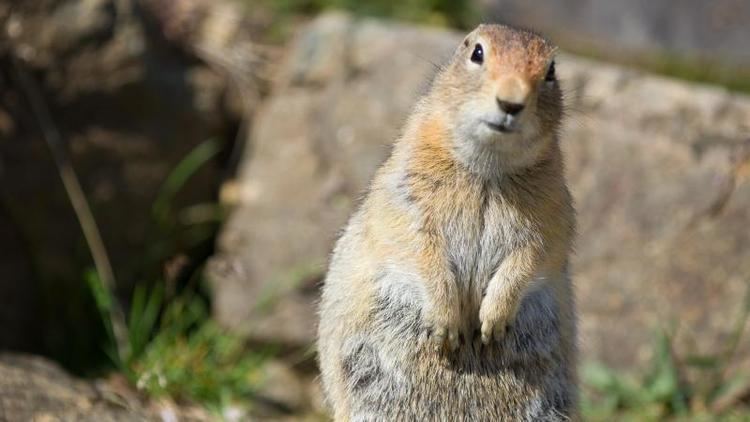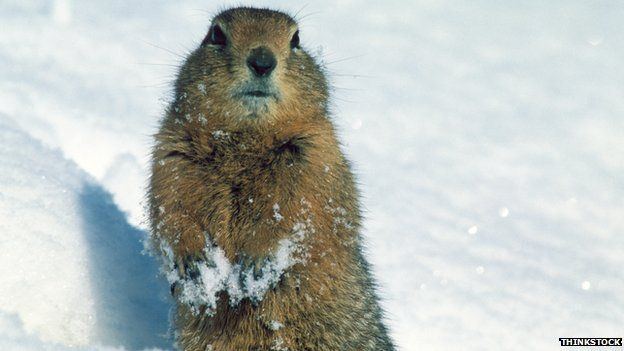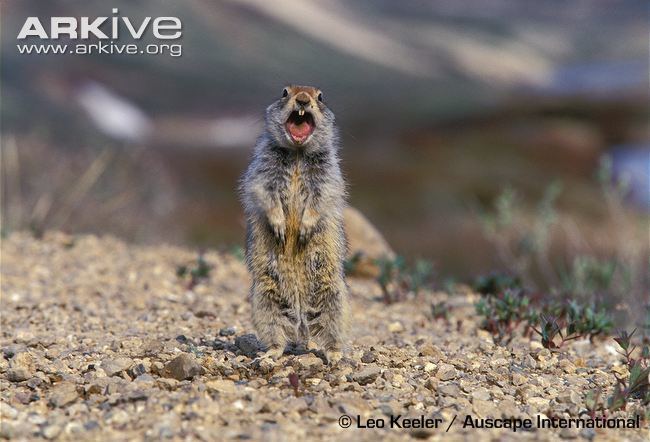Subphylum Vertebrata Family Sciuridae Scientific name Spermophilus parryii Rank Species | Phylum Chordata Genus Spermophilus Higher classification Spermophilus | |
 | ||
Similar Squirrel, Spermophilus, Ground squirrel, Mammal, Urocitellus | ||
Arctic ground squirrel perfect yuppie pet
The Arctic ground squirrel (Spermophilus parryii or Urocitellus parryii) is a species of ground squirrel native to the Arctic. People in Alaska, particularly around the Aleutians, refer to them as "parka" (pronounced "par'kee") squirrels, most likely because their pelt is good for the ruff on parkas and for clothing.
Contents
- Arctic ground squirrel perfect yuppie pet
- Arctic ground squirrel
- Taxonomy
- Description
- Distribution and habitat
- Behaviour
- Diet
- Reproduction
- Conservation
- References

Arctic ground squirrel
Taxonomy
Subspecies listed alphabetically.

Description
The Arctic ground squirrel has a beige and tan coat with a white-spotted back. This squirrel has a short face, small ears, a dark tail and white markings around its eyes. Arctic ground squirrels undergo a coat change from summer to winter. Summer coats include red/yellow colorations along the cheeks and sides of the animal. In fall, these red patches are replaced with silvery fur. The average length of an Arctic ground squirrel is approximately 39 cm (15 in). Since Arctic ground squirrels undergo drastic seasonal changes in body mass, it is difficult to give an average mass, but for adult females it is close to 750 g (26 oz), however, males generally are around 100 g (3.5 oz) heavier than females.
Distribution and habitat

The Arctic ground squirrel can be found in regions of Northern Canada ranging from the Arctic Circle to northern British Columbia, and down to the southern border of the Northwest Territories, as well as Alaska and Siberia.

The Arctic ground squirrel is native to the North American Arctic tundra, where its main habitats are on mountain slopes, river flats, banks, lakeshores and tundra ridges of the arctic tundra. Ground squirrels live in sandy soil due to easy digging and good drainage. Arctic ground squirrels make shallow burrows in areas where the permafrost does not prevent them from digging. The Arctic ground squirrel inhabits dry Arctic tundra and open meadows in the most southern habitats of this species.
Behaviour

The diurnal Arctic ground squirrel lives on the tundra and is prey to the Arctic fox, the red fox, wolverine, lynx, the grizzly bear, and eagles. It is one of the few Arctic animals, along with their close relatives the marmots and the un-related little brown bat that hibernate. In the summer it forages for tundra plants, seeds, and fruit to increase body fat for its winter hibernation. By late summer the male Arctic ground squirrel begins to store food in its burrow so that in the spring it will have edible food until the new vegetation has grown. The burrows are lined with lichens, leaves, and muskox hair.
During hibernation, its brain temperature drops to just above freezing, its core body temperature reaches temperatures down to -2.9 °C and its heart rate drops to ~1BPM. Peripheral, colonic, and blood temperatures become subzero.
The Arctic ground squirrel hibernates over winter from early August to late April in adult females and from late September to early April for adult males, at which time it can reduce its body temperatures from 37 °C (99 °F) to as little as −3 °C (27 °F). In the warmer months, the squirrel is active during the day time.
During the mating season, males engage in male-male aggressive encounters for the mating rights.
Communication between squirrels is done through both vocal and physical means. When they meet, nose to nose contact is made or other body parts are pressed together. The "tsik-tsik" calls are made in response to threats and vary as between different predators. Deep guttural sounds are used to indicate land-based predators while short "band whistle" chatter indicates danger from the air.
Diet
This squirrel feeds on grasses, sedges, mushrooms, bog rushes, bilberries, willows, roots, stalks, leaves, leaf buds, flowers, catkins, and seeds. They will also eat insects, and occasionally they will even feed on carrion (such as mice, snowshoe hares and caribou) as well as juvenile Arctic ground squirrels. Sometimes these squirrels carry food back to their den in their cheeks.
Reproduction
Arctic ground squirrels live individually in burrow systems. Mating occurs between mid-April and mid-May (depending on latitude) after winter hibernation. Mating includes male-male competition for access to females, and litters are typically sired by multiple males. Gestation is approximately 25 days, and results in a litter of 5 to 10, 10 g (0.35 oz) hairless pups. After 6 weeks the pups are weaned and this is followed by rapid growth to prepare for the upcoming winter.
Conservation
Although Environment Yukon has not estimated their population size, their conservation status is currently said to be "secure" (Environment Yukon 2013). The Arctic ground squirrel is classified as least concern (LC) on the IUCN Red List (Arkive 2013).
